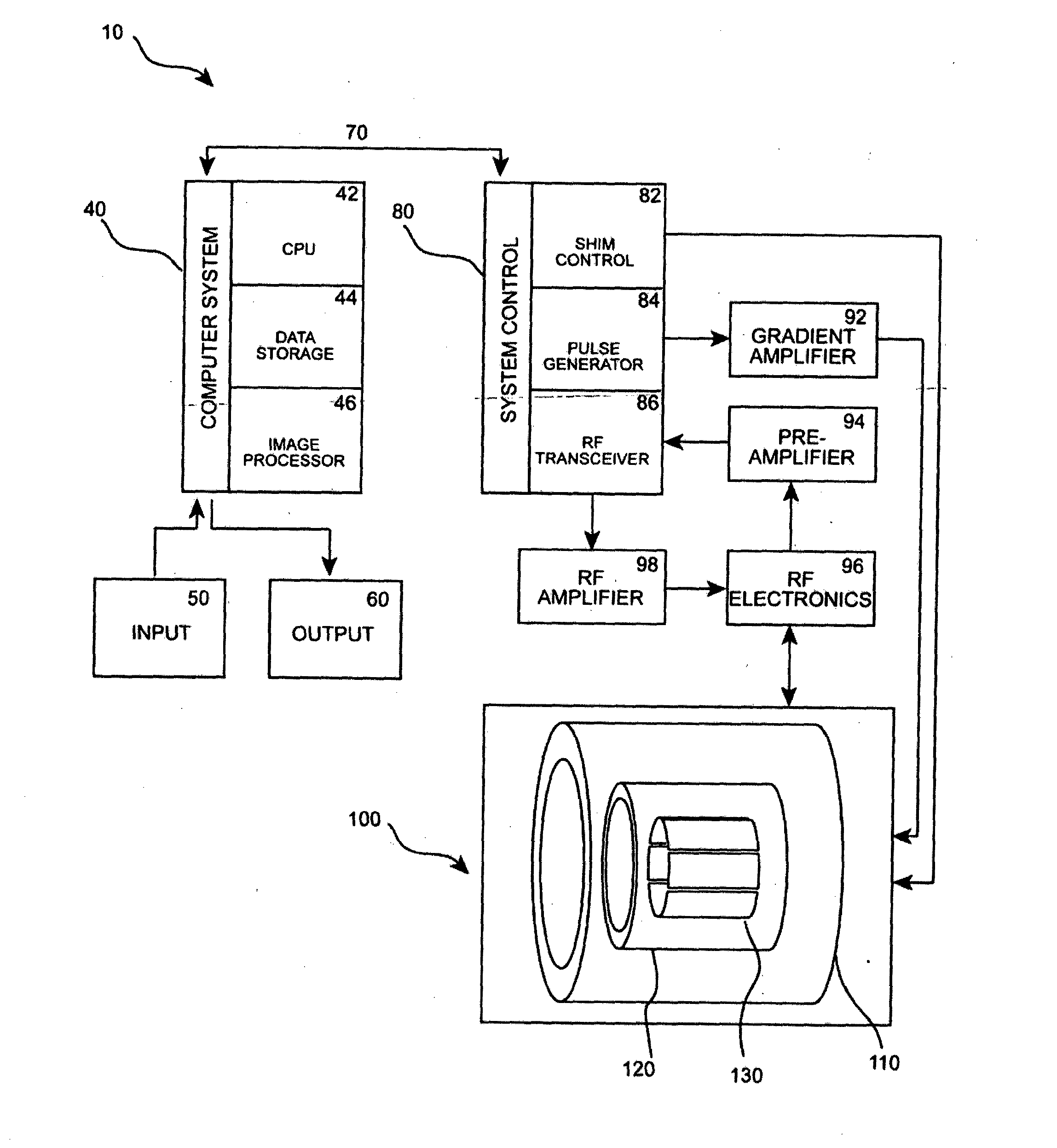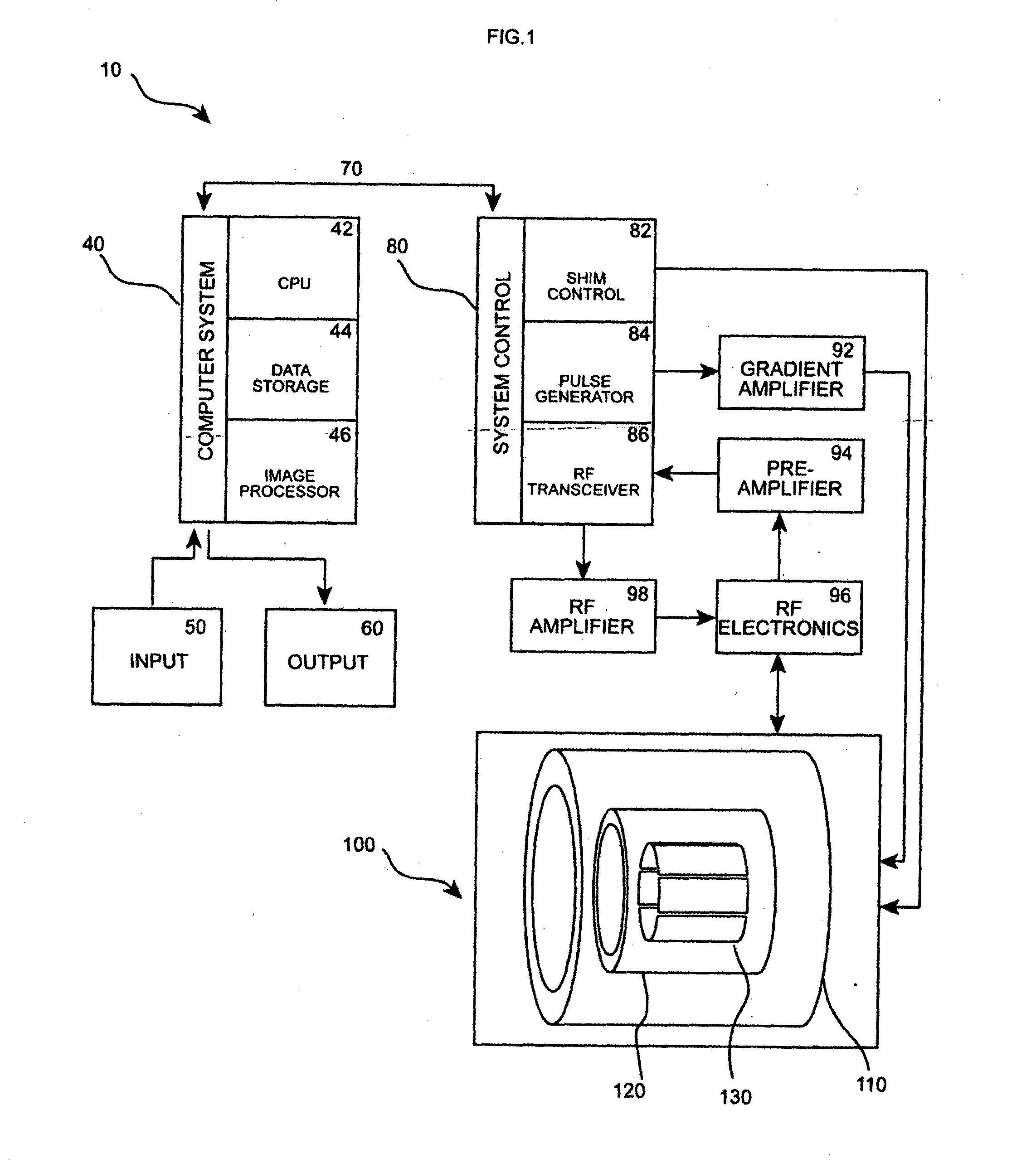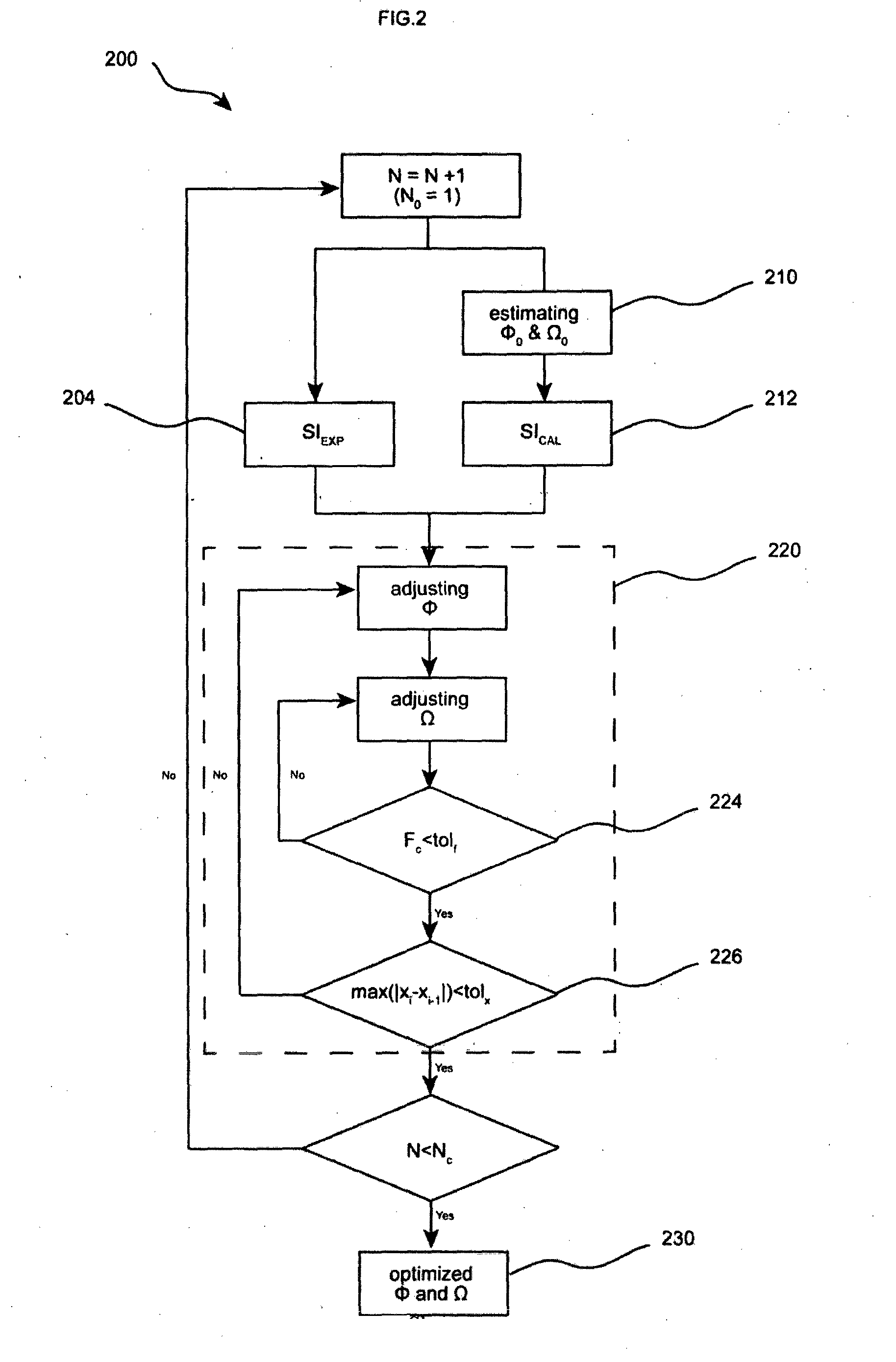Method of estimating specific absorption rate
a specific absorption rate and absorption rate technology, applied in the field of nuclear magnetic resonance imaging, can solve the problems of reducing the accuracy of sar distributions, so as to facilitate a range of operations, improve image quality, and normalise reconstruction.
- Summary
- Abstract
- Description
- Claims
- Application Information
AI Technical Summary
Benefits of technology
Problems solved by technology
Method used
Image
Examples
example
[0046]Referring to FIG. 5, an example of employing the inverse field-based, approach (IFA) is presented. The method is applied to calculate the signal intensity SICAL, the transmit sensitivity profile B1+ and the receive sensitivity profile B1−. They are then compared to the acquired results directly. Experiments were performed on a 7T whole body MRI system (Siemens Magnetom) with a custom-built rectangular-shaped transmit-receive surface loop coil made of 10 mm wide copper tape. The coil, with a length of 210 mm and a width of 90 mm, was loaded with a cylindrical saline phantom with a diameter of 160 mm and a length of 250 mm. The content of the phantom was 7.5 Kg of water doped with NiSO4 and NaCl, so that T1 was decreased and was similar to that of the average human tissue at 300 MHz. The exact conductivity (σ) and relative permittivity (εr) were, however, unknown. The phantom was at the iso-centre of the gradient system, whereas the coil was placed a distance (d=25 mm) away from...
PUM
 Login to View More
Login to View More Abstract
Description
Claims
Application Information
 Login to View More
Login to View More - R&D
- Intellectual Property
- Life Sciences
- Materials
- Tech Scout
- Unparalleled Data Quality
- Higher Quality Content
- 60% Fewer Hallucinations
Browse by: Latest US Patents, China's latest patents, Technical Efficacy Thesaurus, Application Domain, Technology Topic, Popular Technical Reports.
© 2025 PatSnap. All rights reserved.Legal|Privacy policy|Modern Slavery Act Transparency Statement|Sitemap|About US| Contact US: help@patsnap.com



